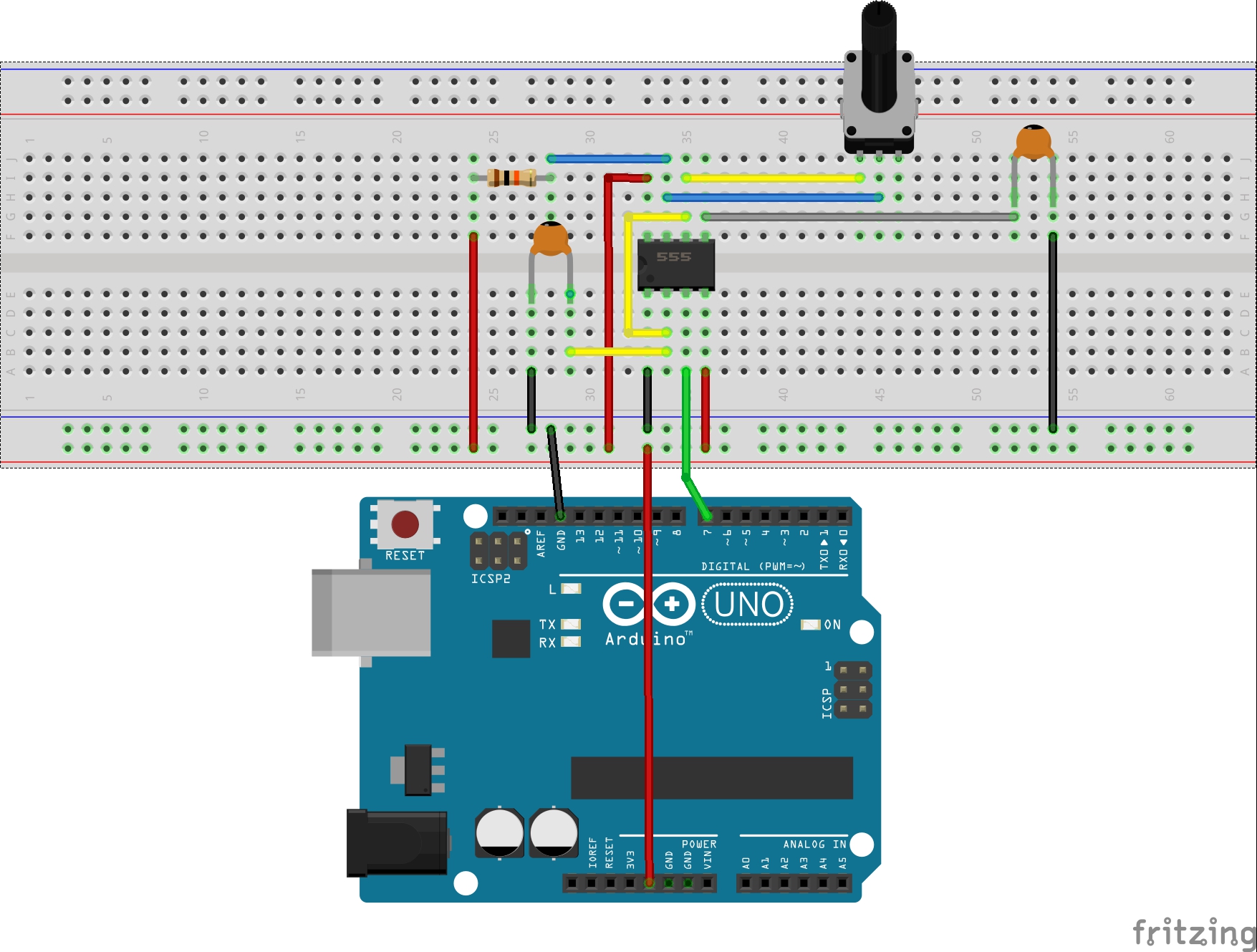
With the settings above, this IRS will trigger each 8.128ms. OCR2B = 127 //Finally we set compare register B to this value TIMSK2 |= B00000100 //Set OCIE1B to 1 so we enable compare match B OCR1A = 6250 //Finally we set compare register A to this value LED_STATE = !LED_STATE //Invert LED stateĭigitalWrite(13,LED_STATE) //Write new state to the LED on pin D5 TCNT1 = 0 //First, set the timer back to 0 so it resets for next interrupt With the settings above, this IRS will trigger each 500ms.
#ARDUINO AS TIMER CODE#
put your main code here, to run repeatedly: OCR1A = 31250 //Finally we set compare register A to this value TIMSK1 |= B00000010 //Set OCIE1A to 1 so we enable compare match A We enable compare match mode on register A*/ We set the prescalar to the desired value by changing the CS10 CS12 and CS12 bits. First we reset the control register to amke sure we start with everything disabled.*/ PinMode(13, OUTPUT) //Set the pin to be OUTPUTĬli() //stop interrupts for till we make the settings * 500ms using timer1 and prescalar of 256.Ĭount up to = 500ms / 16us = 31250 (so this is the value the OCR register should have)*/ * Example code with timer intyerrutp that will create an interruption each We could also make this line here, it would do the same. So we equal that to OR and this byte 0000 0010. For that, remember we need to set the OCIE1A bit to be a 1 and that’s from the TIMSK1 register. Now the prescalar is defined to 256, let’s enable the compare match mode for OCR1A register. If you want to se zeros, we use an AND operation. If you want to set ones, we use an OR operation. There are multiple ways to set this as we have learned in previous episodes. Then let’s set the prescalar to 256 as decided before, so for that in the Arduino code we set TCCR1B equal to 00000100. So first, in the code below we reset the values of TCCR1A and 1B to 0 to make sure everything is clear. Knowing this, let’s make our example that will blink an LED each 500ms. For example, if we set OCR1A to be 2000, when timer 1 reaches 2000 it will create an interruption. So these OCR registers will tell when to make the interruption. As you can see, according to the lines in the datasheet below, setting the bits 1 and 2, we can enable time compare interrupt on the value defined on registers OCRA and OCRB. To activate the compare match interruption we set the TIMSK register. But we haven’t specified when to make the interruption. Now we have the prescalar and the timer defined so the timer will go from 0 to 65 536 and then back to 0. Part 5 - Setting the Interrupt (Compare Match)

For the timers 0 and 2 we have to use the TCCR0B and TCCR2B and bits CS00, CS01, cS02 ands bits CS20, CS21 and CS22.


As you can see in the table below, using the CS10 CS11 and CS12 bits, we can disable the prescalar or set it to 1, divided by 8, 64, 256, 1024 or even use an external clock source.

Here, all we care are the first 3 bits which are used to define the prescaar value. Now, we need to change the TCCRB register. So, setting all these to 0 will disable the PWM signal on pin 9 and 10. For our interrupt examples we don’t need this register but we do need to set all its bits to 0 since Arduino by default has them set to 1. TCCRA register is for controlling the PWM mode so for timer 1 we can control the OC1A which is related to the PWM signal on pins 9 and 10. So for timer 1 we have TCCR 1A and TCCR 1B. To control the timers we have two main registers, the TCCR A and the TCCR B, each with the number of the timer. You can configure the prescaler for each timer using the related register and we will see examples in a moment.įirst register we need to change is the prescalar. So each 8 pulses from the system clock, our timer will increase by 1. So, the output signal from the prescalar will be 8 time slower so 500ns. That’s 62.5ns for each pulse, right? You feed that to the prescalar which lets say is set to 8. So for now imagine the main system clock is the 16Mhz crystal that will create a 16Mhz square signal.
#ARDUINO AS TIMER HOW TO#
This prescalar divides the number of pulses from the system clock by the number you define which could be 8, 64, 256 and so on, and later we will see how to define this prescalar division number. Between our timer counter and the system clock, we have another piece of hardware which is called prescalar. This timer is fed by the system clock, which for our Arduino UNO could be the 16Mhz crystal clock or depending on the bootloader could also be an 8MHz internal oscillator. Imagine our timer as a counter that counts pulses.


 0 kommentar(er)
0 kommentar(er)
